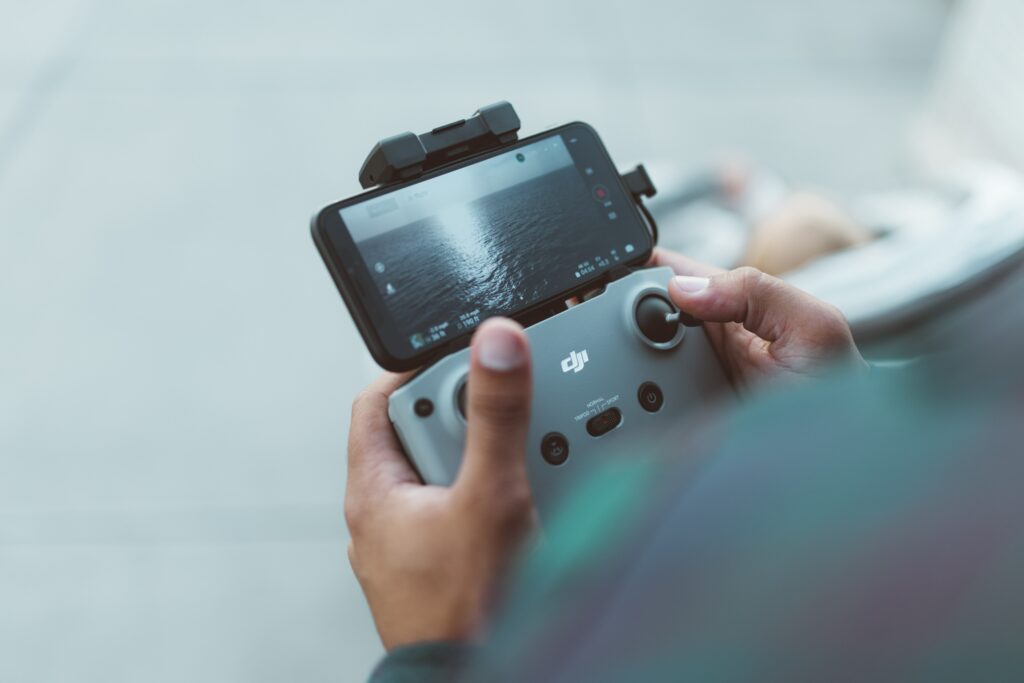We should clear up one myth before we continue, a photographic portfolio is not the preserve of the professional photographer. Yes, in the days before digital, a folio case of beautiful, well-presented photographs was the first step in getting a commission, but in the digital, internet age, it is more a way to showcase your images to a wider world. That can be for the purpose of making money or simply to gain recognition and respect for your photography.
Traditionally, portfolios were printed and presented in a case. Photo by Erich Stüssi
What is a Portfolio?
This is a fundamental question that you need to know the answer to before setting out to create one. There is a misconception that a portfolio is a collection of your most beautiful and striking images. This, however, is not necessarily the case. Whilst the images within the portfolio need to capture the eye of the viewer, their primary purpose is to showcase your skills, both creative and technical. This means that, for example, if you are a portrait photographer, rather than show beautiful subjects under similar lighting conditions, you would show a range of people of different ages under different, diverse lighting. This would demonstrate to the viewer the range of your technical and creative abilities. A landscape photographer might even show the same view twice, but with different perspectives and techniques used.
Keep it on Theme
Very few photographers are accomplished in several different fields, the vast majority of us have one, maybe two areas of photography that we are most accomplished at. Keep this in mind when selecting images for your folio. If you are a landscape photographer, don’t suddenly throw in a single studio portrait shot. This will jar the eye of the viewer and make them question where your speciality lies.
Edit, Edit and Edit Some More
Another common mistake of people creating their first portfolio is to display dozens of shots. A good portfolio will have between 20 and 30 images that showcase the photographer’s abilities. If you have a good cataloguing system, you will have identified the chaff from the wheat in the initial editing stage. It is good practice if using an image management program to add stars to images when you do your initial look through. In my case, using Lightroom, I give any shot that has portfolio potential four stars and any image selected for the portfolio, five stars.
You might have several hundred images that can be considered for your portfolio, work on instinct for the first edit. Look quickly through all the potential shots and eliminate any that on first look don’t work. You should then do two or three more run-throughs, eliminating more images each time. Take breaks between those run-throughs, the more time you spend at a screen section images, the more you become desensitised to them. Do secondary and tertiary edits on different days until you whittle down to your final selection.
Presentation
Having selected your final portfolio, you need to present it to the world. Of course, this article is about online portfolios and here you have two options, a bespoke website, created by yourself or a web designer, or an image gallery site. Whichever you choose, the site needs to be clean, unfussy and either modern or elegant looking. Choose a look that compliments your style of photography, if you shoot black and white, for example, do not use a coloured background.
Prepare your images carefully for the website. Size them to the exact dimensions in Lightroom or Photoshop before uploading. Websites generally do not do as good a job as dedicated post-production software at resizing. Make sure your images are technically perfect, free from blemishes or dust spots, well exposed and within the limits of the histogram. Once resized, sharpen the images ready for web display and also add captions and keywords. This is important as it will help search engines find your online portfolio.
Getting Seen
Of course, even the world’s best portfolio is a waste of time if it does not get seen. Make sure you have social media links on your site and that you promote the site through your social media account. If you have a blog, link to and mention your portfolio regularly. If you use forums put the web address in your signature, you can also add it to your email signature.
Whilst not vital for enthusiasts, a good online portfolio can be a great way to keep your motivation up. The people that like and comment your work will spur you on to take more, the people that leave constructive criticism will enable you to push yourself to learn new techniques. In this respect, an online portfolio is a valuable addition to any photographer.








2 Comments
Thank you so much for this intelligent publication.
I have been thinking a lot about my website and how to go about it.
I now feel secure about the next steps: images selection and web site ‘design’. Equally important, what I want to convey to my audience and web marketing strategies that are simple and yet go beyond SEO.
Cheers Jason!
The artist has to have a separate thought about his artwork, a specific genre which his work belongs to before going online. Simply uploading the assorted lot will create a mixed bag of confusion among the viewer.
You should not mix up things this way.